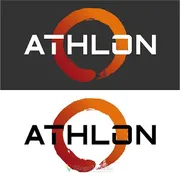AMD Athlon X4 850

AMD Athlon X4 850: A Budget Processor for Basic Tasks in 2025
A Relevant Review for Budget-Conscious Users
Key Specifications: Architecture, Process Technology, and Key Features
Godaveri Architecture: A Legacy from 2014
The AMD Athlon X4 850, released in 2016, is based on the Godaveri microarchitecture — an evolution of Piledriver. Despite its age, it remains relevant for basic tasks thanks to its 4 physical cores with no support for multithreading (4 cores / 4 threads). The manufacturing process is 28 nm, which by 2025 is considered outdated (modern chips use 5–7 nm). Its base frequency is 3.2 GHz, with no turbo mode.
Performance: What to Expect?
- Single-threaded Load: Performance is lower than modern counterparts (for example, AMD Ryzen 3 5300G on 7 nm). In Cinebench R23 tests: ~250 points (single-threaded), ~900 points (multi-threaded).
- Multitasking: Suitable for office applications (Microsoft Office, browsers), but not for rendering or heavy software (Blender, AutoCAD).
Key Features:
- Low power consumption (TDP 65 W).
- Unlocked multiplier for overclocking (but potential is limited due to 28 nm).
Compatible Motherboards: Sockets and Chipsets
Socket FM2+: An Outdated Standard
The processor requires motherboards with the FM2+ socket. Popular chipsets include:
- A68H: A budget option with support for USB 3.0 and SATA III. Example: ASUS A68HM-K (price in 2025 — $40–$60).
- A88X: Enhanced capabilities (more stable overclocking, more ports). Example: Gigabyte GA-F2A88XM-D3H ($70–$90).
Selection Tips:
- New FM2+ motherboards are rarely produced — look for leftovers on Amazon, Newegg, or Aliexpress.
- Check for X4 850 support in the BIOS compatibility list (version no lower than P2.10 for ASUS boards).
Supported Memory: Only DDR3
DDR3-2133 MHz: Platform Limitation
The Athlon X4 850 works with DDR3 memory (not DDR4/DDR5!). The maximum frequency is 2133 MHz in dual-channel mode. Recommended modules:
- 2×4 GB DDR3-1866 (minimal option for Windows 10/11).
- 2×8 GB DDR3-2133 for multitasking (e.g., Kingston HyperX Fury, $25–$35 for 8 GB).
Important: The low bandwidth of DDR3 limits performance in games and memory-intensive applications (e.g., Photoshop).
Power Supply Recommendations
Minimum Requirements:
- Without a discrete graphics card: 300 W PSU (e.g., EVGA 300W, $35).
- With a graphics card like NVIDIA GTX 1650: 450 W PSU (Corsair CX450, $55).
Advice:
- Avoid cheap noname power supplies — unstable power can damage components.
- For overclocking, add 50–100 W to your calculated power needs.
Pros and Cons of AMD Athlon X4 850
Pros:
- Price: New processors in 2025 — $45–$60 (2–3 times cheaper than Ryzen 3 5300G).
- Energy Efficiency: Ideal for low-power builds (HTPC, office PCs).
- Ease of Upgrade: Suitable for replacing old Athlon/Phenom CPUs on the FM2+ platform.
Cons:
- Outdated Architecture: Lags behind even budget Intel Celeron G5920 (2020) in single-threaded tasks.
- No Integrated Graphics: Requires a discrete graphics card (even for basic display output).
Use Cases: Where is the X4 850 Still Relevant?
1. Office Tasks: Document work, video conferencing, light web browsing.
2. Multimedia: Watching FullHD videos, streaming via YouTube (but 4K may lag).
3. Light Gaming:
- CS:GO on low settings (up to 60 FPS with GTX 1050).
- Minecraft, Terraria, indie projects.
Real Example: A user built a PC with X4 850 + GTX 1050 Ti + 8 GB DDR3 for a child — Minecraft and online lessons run smoothly without lag.
Comparison with Competitors
1. Intel Pentium Gold G6400 (2020):
- 2 cores / 4 threads, 4.0 GHz, 14 nm.
- Integrated UHD 610 graphics.
- Price: $75.
Conclusion: Pentium is better in single-threaded tasks, but more expensive.
2. AMD Ryzen 3 3200G (2019):
- 4 cores / 4 threads, Vega 8 iGPU, 12 nm.
- Price: $110.
Conclusion: Ryzen 3 wins in all aspects but requires AM4 platform and DDR4.
Practical Assembly Tips
1. Motherboard: Look for models with USB 3.1 and HDMI (e.g., ASUS A88XM-A).
2. Cooling: The stock cooler is sufficient, but for quieter operation, install a Deepcool GAMMAXX 400 ($20).
3. Graphics Card: Budget options — NVIDIA GT 1030 or AMD RX 550 (new ones — $80–$120).
4. Storage: Ensure you get an SSD (Kingston A400 240 GB — $25) to speed up the system.
Warning: Do not buy DDR3L (low-voltage) memory without motherboard support!
Final Conclusion: Who is the Athlon X4 850 Suitable For?
This processor is a choice for:
- Budget Builds: If your goal is to stay within $200–$300.
- Upgrading Old PCs: Replacing outdated Athlon II X4 without changing the motherboard.
- Specialized Tasks: Media centers, terminals for cafes, simple home servers.
Alternatives for 2025: If the budget allows for $150+, consider Ryzen 3 5300G or Intel Core i3-12100 — they will provide performance headroom for 3–5 years.
Conclusion: The AMD Athlon X4 850 in 2025 is a niche solution for those who value minimalism and economy. However, for modern tasks, it's better to invest in newer platforms.
Basic
CPU Specifications
Memory Specifications
GPU Specifications
Benchmarks
Compared to Other CPU
Share in social media
Or Link To Us
<a href="https://cputronic.com/index.php/cpu/amd-athlon-x4-850" target="_blank">AMD Athlon X4 850</a>